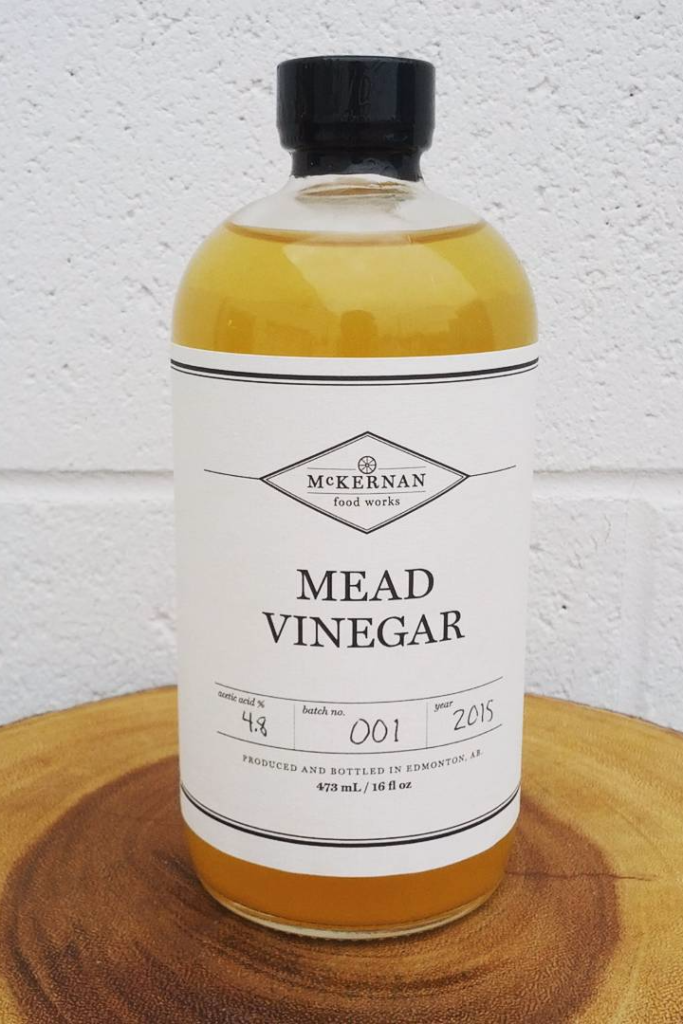
My food heroes are those who can generalize food concepts for me. I’ve mentioned Ruhlman’s book Ratio about a hundred times on this site. Some other examples. I love the flavour of preserved lemons and I’ve made them a few times, but then I saw Mojojo Pickles makes preserved lime. This completely changed how I saw my preserved lemon recipe. Instead of one recipe that can preserve one ingredient, I now see it as a generalized process for preserving citrus. Or Kevin recognizing that blanching is not just for endives, but a great agricultural technique to use on other bitter greens like our local dandelions. This type of thinking drives so much of modern food, whether it’s David Chang applying the bonito-making process to pork,[1] or Noma applying traditional miso techniques to rye and peas.[2]
An Austrian company called Gölles did something similar and completely changed how I saw vinegar. Before I toured their facility I knew white vinegar, cider vinegar, malt vinegar, and wine vinegar, but had never considered vinegar-making as a generalized process that can be applied to almost any solution that contains alcohol. Gölles makes pear vinegar, apricot vinegar, apple balsamic vinegar, and even stranger things like tomato vinegar and beer vinegar.[3] It’s important to note that they aren’t just flavouring white vinegar with these ingredients (like most “raspberry vinegars” et c in the grocery store…): they are actually fermenting them, which yields a very different product.
When I was producing vinegar as McKernan Food Works, I knew apple cider vinegar would be my flagship, but I wanted at least two other vinegars in the line-up that had contrasting colours. I settled on mead and malt, because like cider vinegar they are based on cheap, plentiful local resources, namely honey and barley.
I used honey from Meadow-Sweet Apiairies, located near Tofield, Alberta. Like most of the honey made here in central Alberta, it is largely derived from the nectar of our abundant clover and alfalfa pastures.
At first I was worried that my cider vinegar culture wouldn’t transfer easily to a mead substrate. I decided to “wean” my active culture by inoculating a mixture that was half apple cider and half mead. Once this had become vinegar I used it to inoculate a batch that was 100% mead.
Making the mead vinegar regularly I eventually had a batch of mead that sat so long that it spontaneously started its own vinegar fermentation and this became the mother to all subsequent batches.
The funny thing about mead vinegar, like mead, is that most people expect it to be sweet because it is made from honey. While you can have sweet mead and sweet mead vinegar, these products are not necessarily sweet. Depending on how you let the fermentation progress, it’s possible that almost all of the sugars in the original honey are metabolized by the yeast, leaving a bone-dry beverage.
My mead vinegar is quite dry, with little to no residual sweetness. It has the yeasty, floral smell of raw honey. On the tongue it has a much lighter body than, say, my apple cider vinegar. The acidity is very bright and lively. The exact acetic acid content can be controlled by how much the initial honey is diluted, and how the fermentations progress, but I usually try to make a stronger vinegar that is 6-9% acetic acid by volume.
In the kitchen you can use mead vinegar as you would any other vinegar. You could make, for instance, a superlative vinaigrette using mead vinegar, honey, cold-pressed canola oil, and a small amount of mustard.
Here’s another idea. I think that mead vinegar goes well with the flavour of most root vegetables, especially carrots, beets, and parsnips (especially parnsips). You could roast any combination of these veggies in a very hot oven, then glaze them with a sweet-and-sour combination of honey and mead vinegar. Come to think of it, that glaze might work well on pork chops, with a bit or rosemary.
Footnotes
- This is featured in the first season of the PBS series Mind of a Chef.
- The Noma Guide to Fermentation has an entire chapter on this.
- They also make the best Schnapps I have ever tasted.